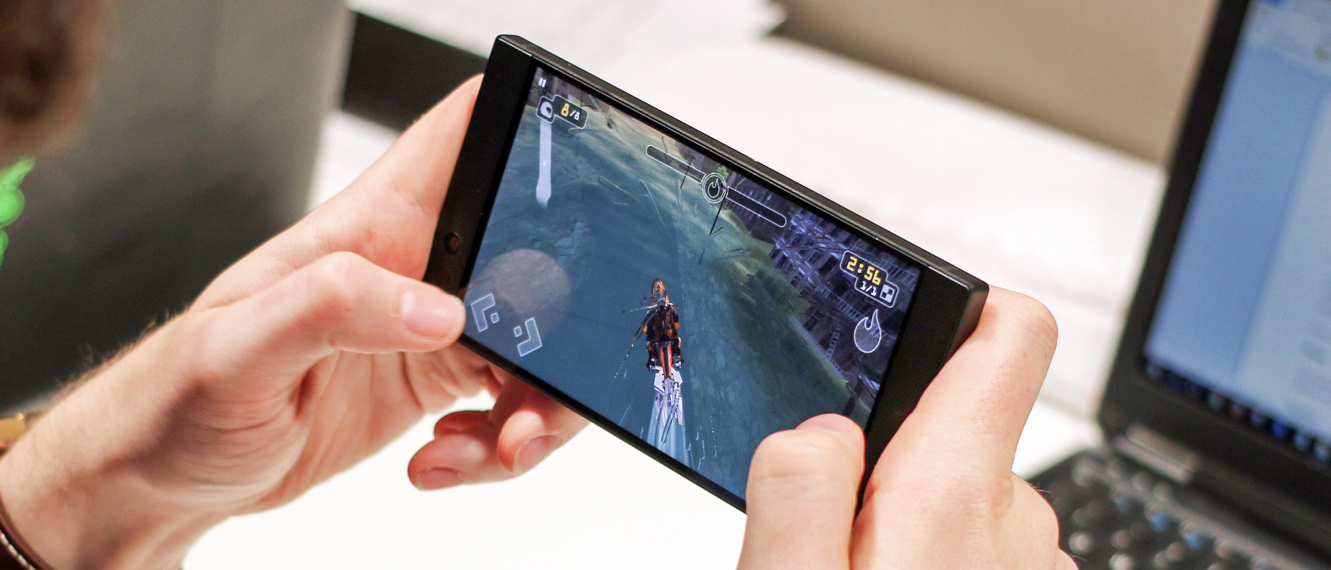Why you can trust TechRadar
Design
- Square, blocky and a little uninspired
- No headphone jack, but audio adapter with built in 24-bit DAC in box
If the design of the Razer Phone looks familiar, that’s because the gaming giant purchased startup smartphone maker Nextbit back in January 2017 – igniting rumors that it was planning on launching its own smartphone – and it’s used the design of Nextbit’s only handset, the Nextbit Robin, here.
The three key visual differences between it and the Razer Phone are the latter’s slightly taller, wider build, its new black paint job, and the increased size of the speaker grilles on the front. It’s also a lot heavier at 197g, versus the 150g Robin.
All of this means the Razer Phone is square, blocky and, if we’re honest, a little uninspired in the looks department – especially when you consider that 2017 has given us the Galaxy S8 and iPhone X.
It’s not a bad design, and it’s more comfortable to hold landscape then you’d expect with its flat edges and angular corners, but its looks are polarizing.
We met some people during our time with the phone who loved the design, but the majority we spoke to were less enamored with what Razer has done.
Razer Phone hands on gallery
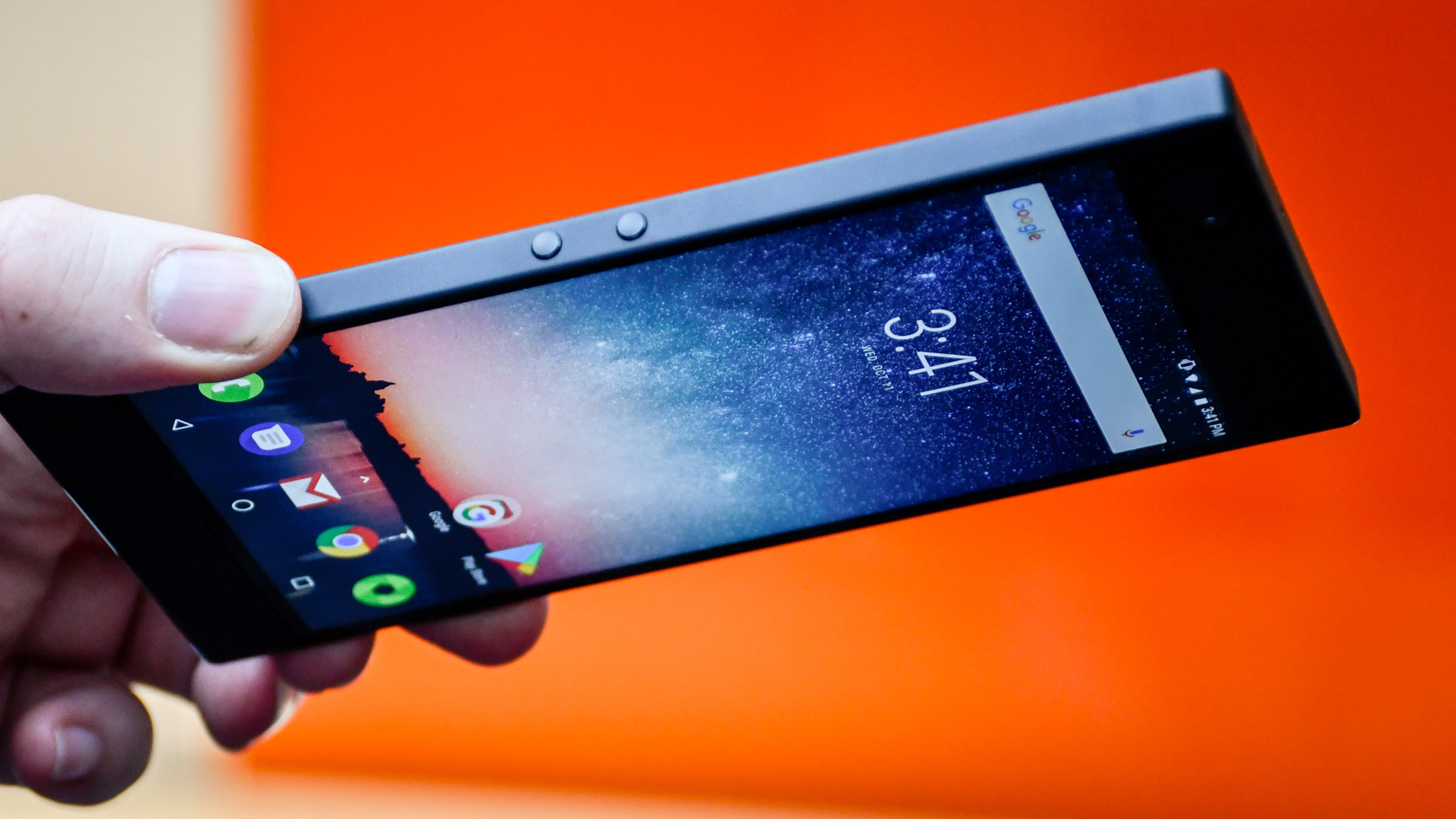

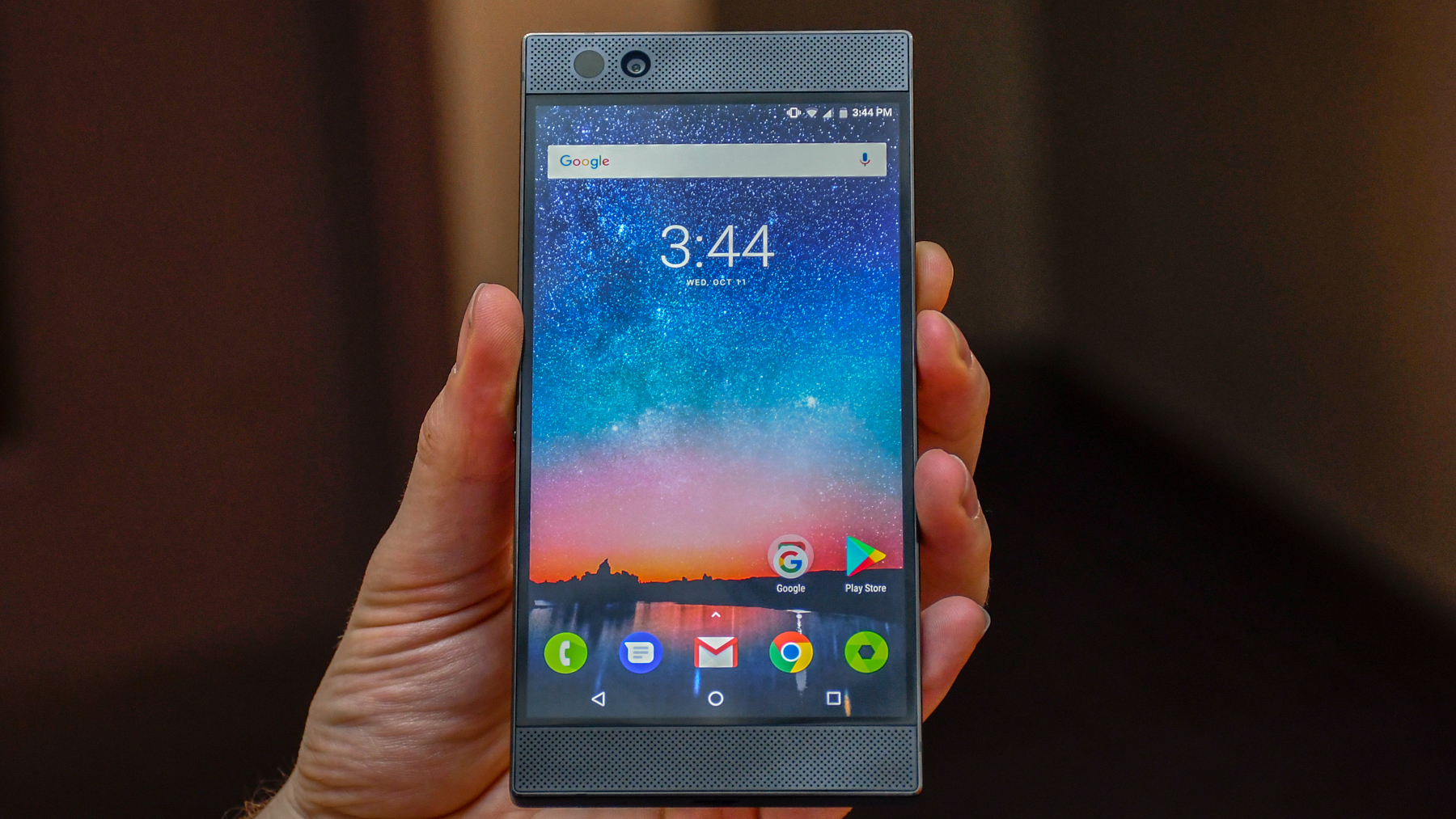


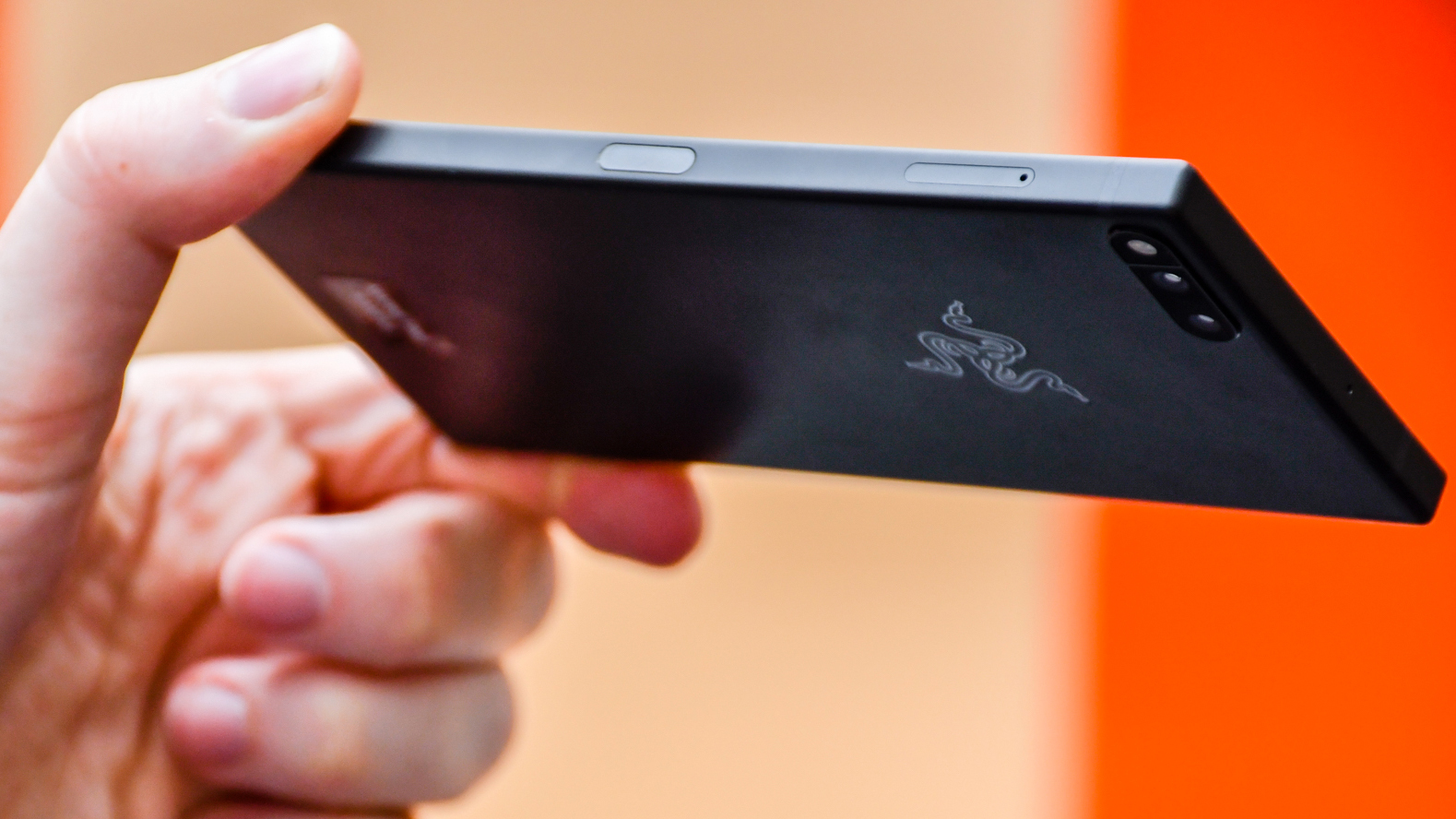
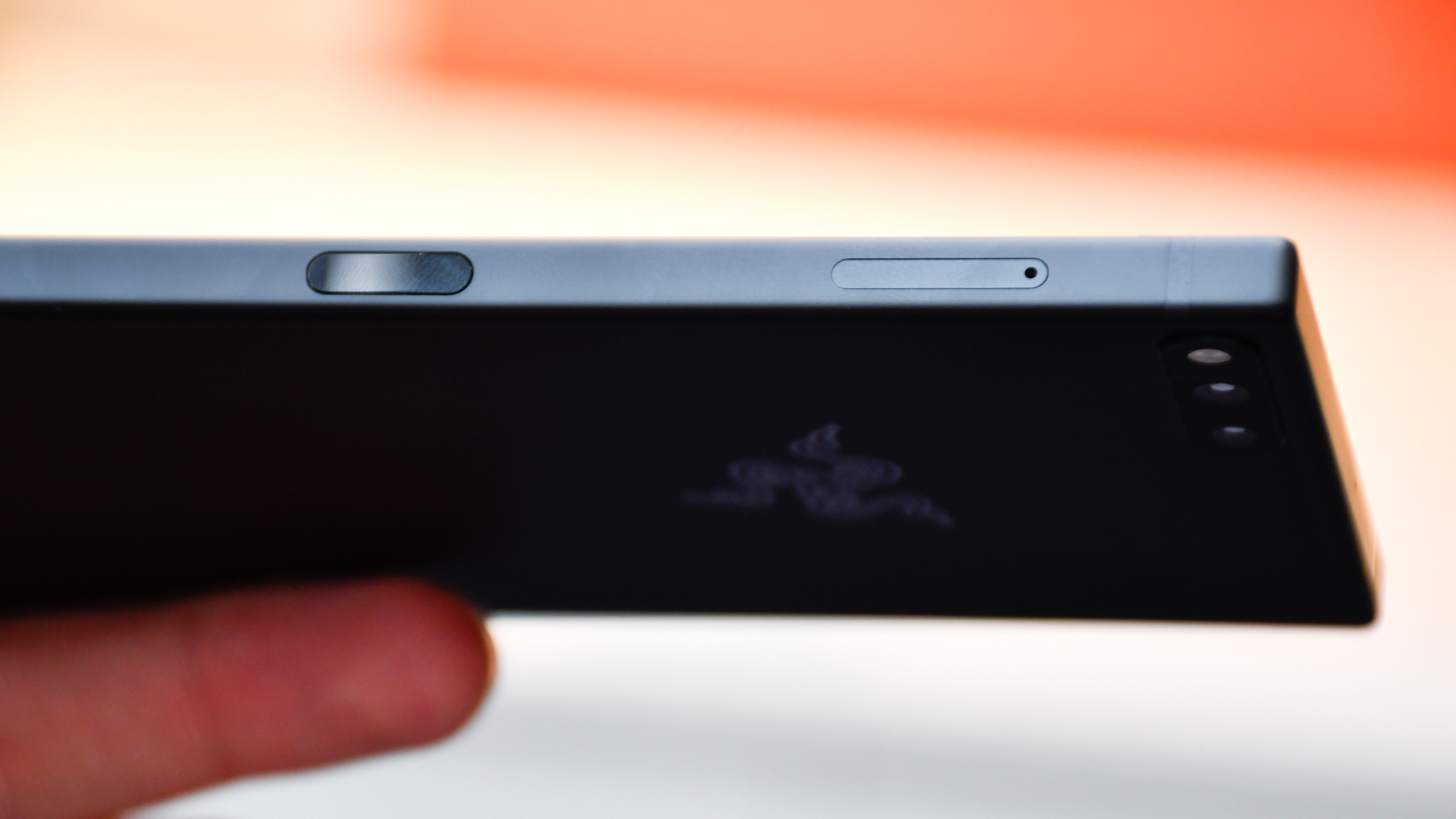
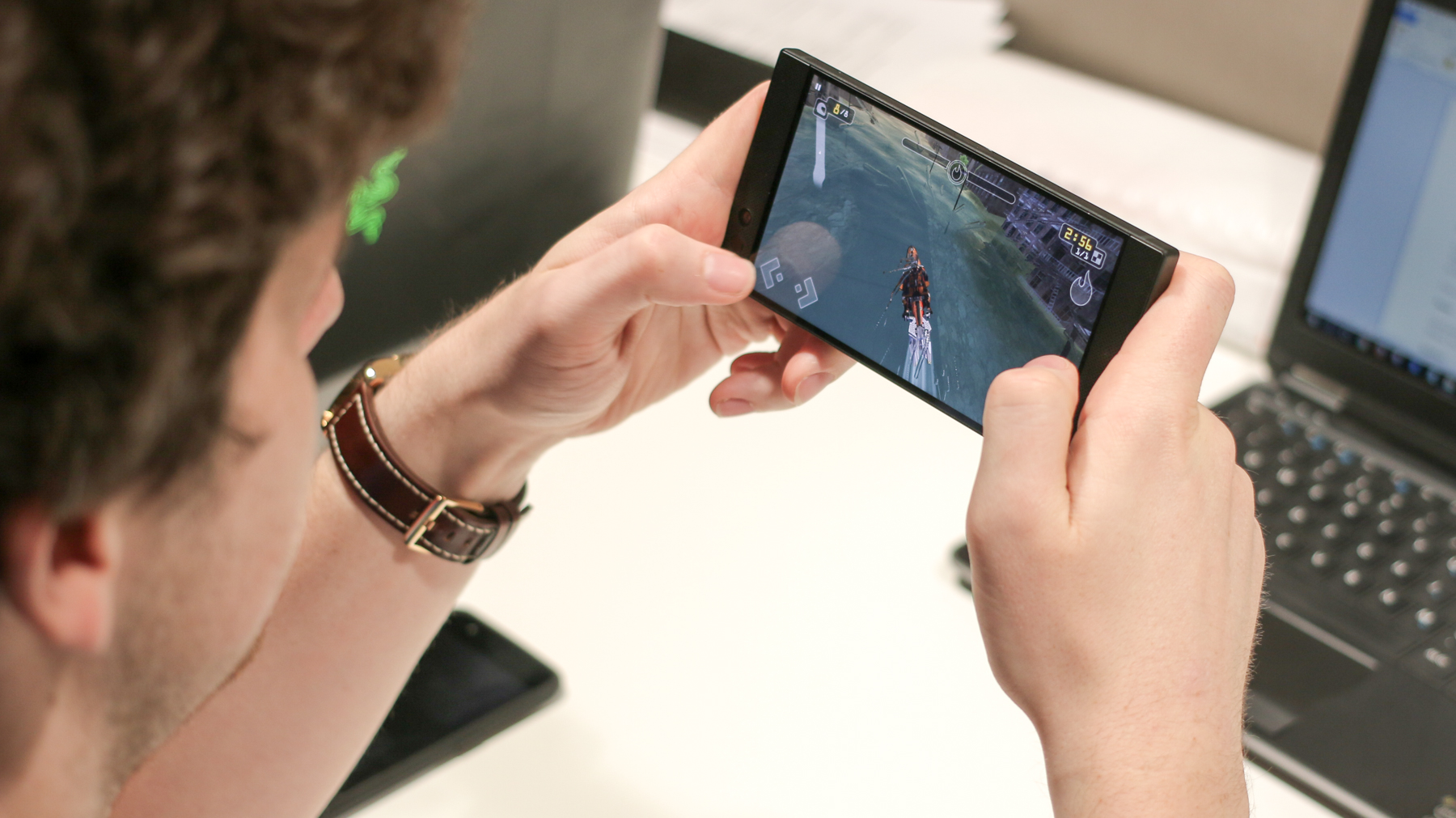
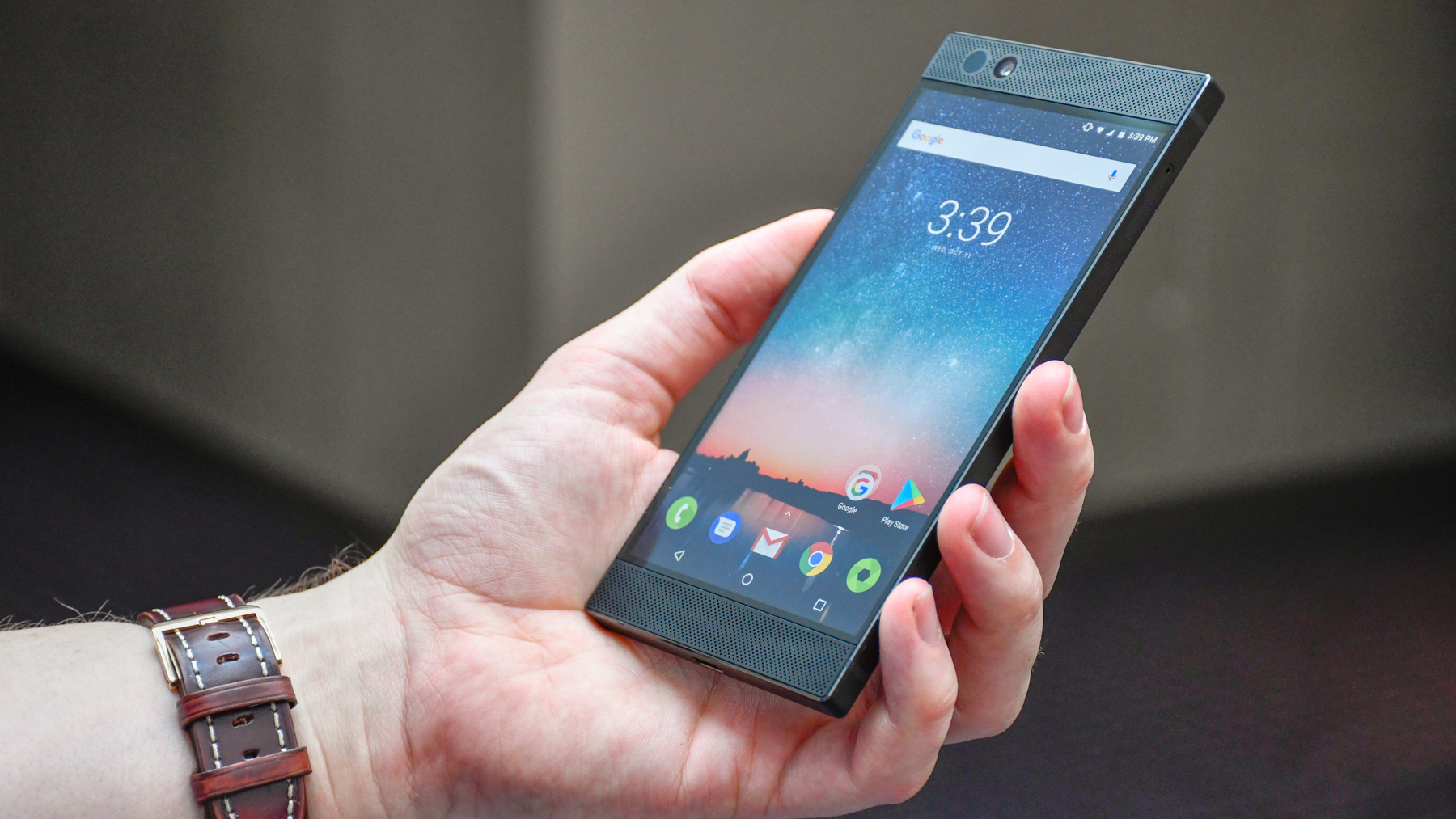
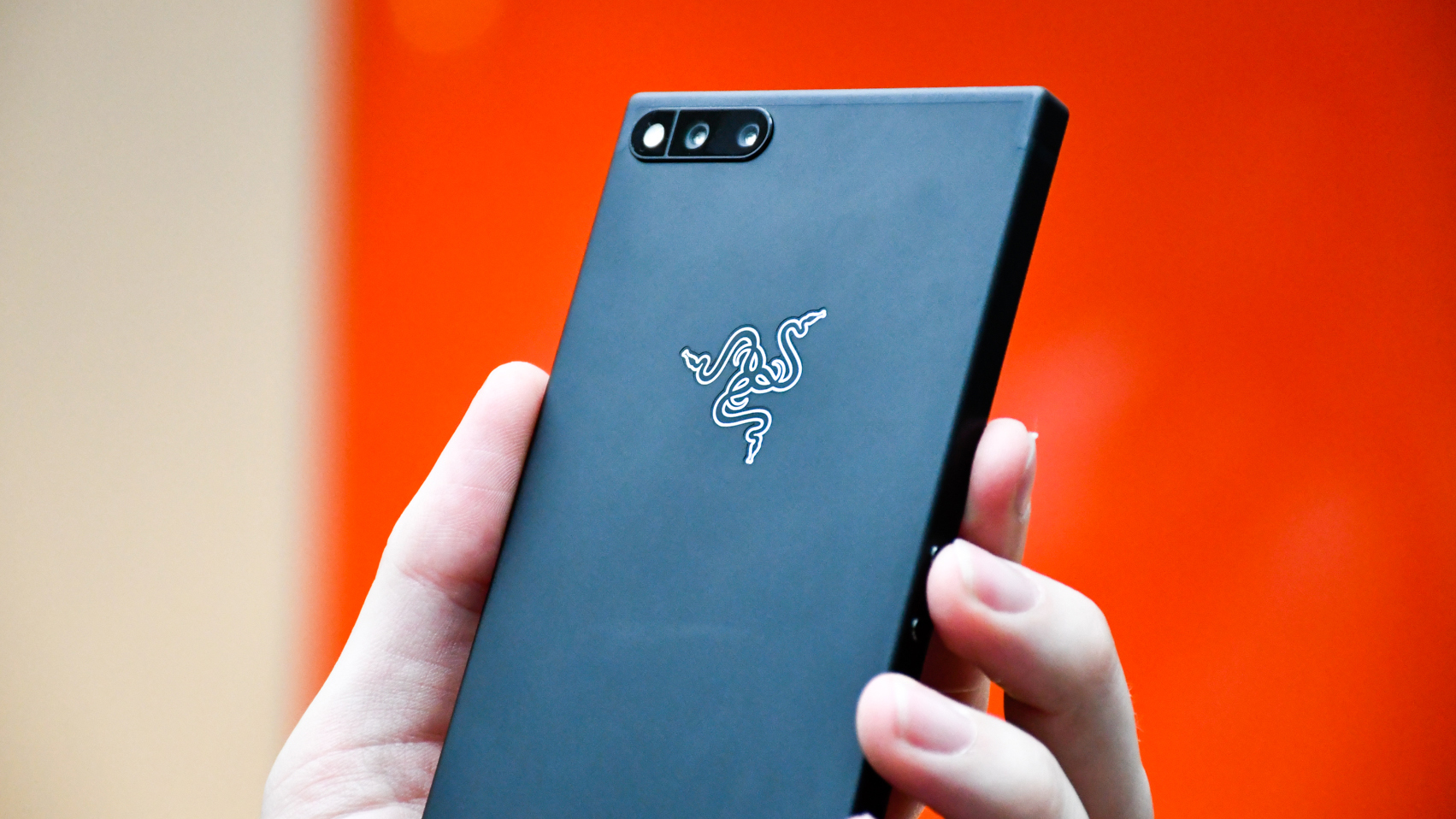
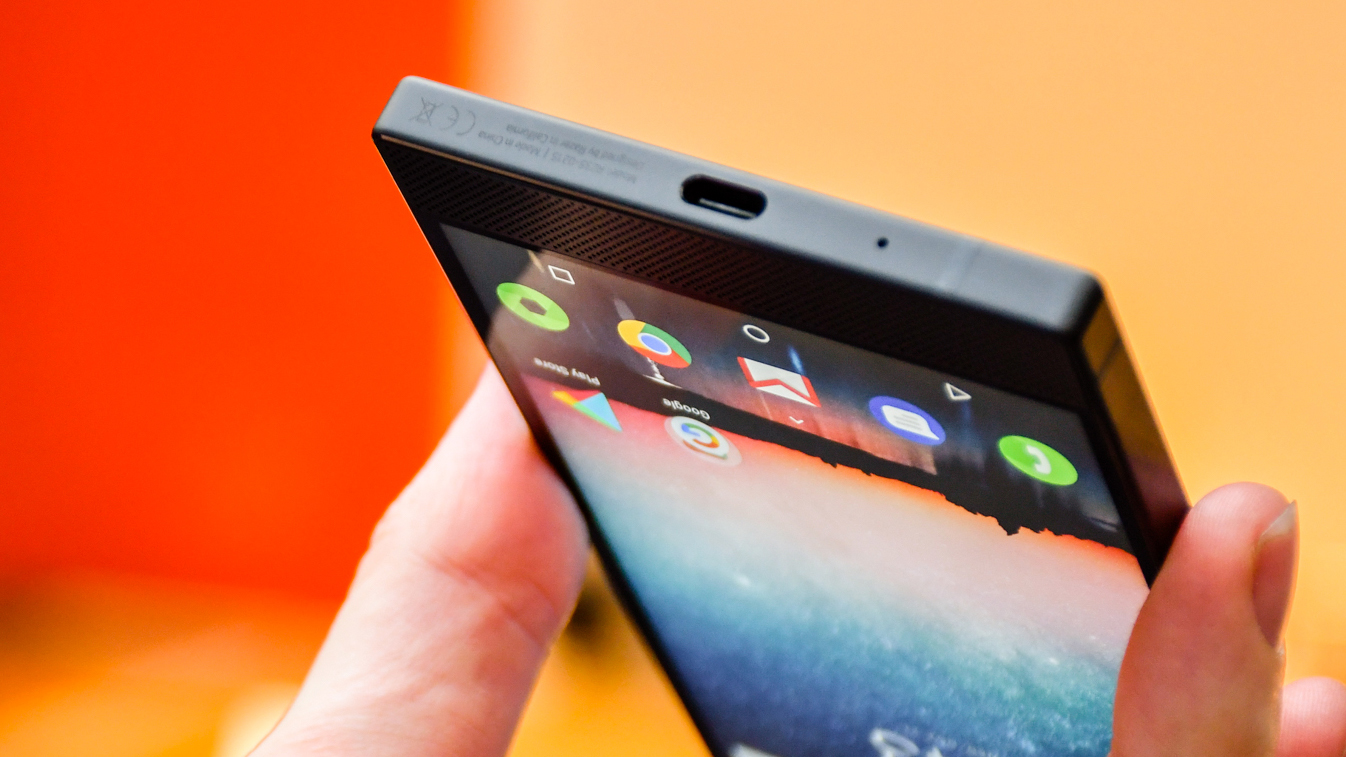
The phone boasts the same finish as other Razer products, in an attempt to win fans of the brand over, and it was designed based on the phone being primarily used in landscape orientaion for gaming, which partly explains the larger bezels above and below the display.
Sign up for breaking news, reviews, opinion, top tech deals, and more.
As well as housing a couple of excellent speakers, the bezels provide the perfect place to rest your hands when you’re gaming, meaning you cover less of the screen with your mitts, giving you a better view of the action.
At 8mm thick and with no rounded edges the Razer Phone does feel a little chunky, and it’s less comfortable to hold in portrait orientation. Plus, at 197g it’s also one of the heavier handsets on the market.
There’s a centralized power/lock key on the right of the handset which also houses the fingerprint scanner, while on the left two small circular buttons provide volume control. A USB-C port resides on the bottom.
There is, however, no headphone jack, although Razor includes an audio adapter with a built-in 24-bit DAC with Dolby Atmos support in box, allowing you to plug in your corded headphones.
That’s a potentially big stumbling block for some gamers, as dedicated gaming headsets generally utilize the 3.5mm headphone jack, and its omission here feels like it could alienate some fans. The adapter is a nice addition, but you’ll want to be careful not to lose it.

Round the back a large black and white Razer logo dominates, but there will be a limited number of handsets with a green logo for those who pre-order, or purchase the phone on launch day.
Razer has also used the fanless cooling technology found in its laptops in the phone, which stops the handset heating up too much and prevents hot spots, allowing for a more comfortable gaming experience for longer.
It works too. The phone still gets warm during extended periods of gameplay, but the heat is distributed evenly across the mental unibody, and in our time with the handset it never reached an uncomfortable temperature.
Speakers
- The best speakers on a smartphone
- Tuned to Dolby Atmos standards and first to be THX-certified
Another important feature of the Razer Phone are the speakers, and we’ll get right to it. The dual front-facing speakers on this phone are, hands-down, the best speakers on any smartphone at the moment.
Each speaker has its own amplifier, and they've been tuned to Dolby Atmos standards and are the first smartphone speakers to be THX certified. Together they provide a '3D visualization' of sound, meaning they sound just as good when you’re behind the phone as when you’re in front of it.

The impressive stereo and immersive qualities make it sound like Razer has packed in more than just the two speakers, and you notice the quality every time you listen to audio on the handset.
From quick YouTube clips and Twitter videos to movies and games, the Razer Phone speakers aren’t just loud, they’re also crisp and clear. While there is some bass, it’s not going to be shaking the floor – this is still a smartphone, not a large sub box.
There’s very little distortion even at the highest volume, and you can really appreciate the stereo quality of the sound when holding the phone in landscape.
We put the Razer Phone up against the iPhone 8 Plus and it comfortably won the head-to-head, with richer, clearer and more immersive sound even at full volume.
This phone gives you proper, room-filling sound without distortion, and the iPhone sounded tinny in comparison.

TechRadar's former Global Managing Editor, John has been a technology journalist for more than a decade, and over the years has built up a vast knowledge of the tech industry. He’s interviewed CEOs from some of the world’s biggest tech firms, visited their HQs, and appeared on live TV and radio, including Sky News, BBC News, BBC World News, Al Jazeera, LBC, and BBC Radio 4.
